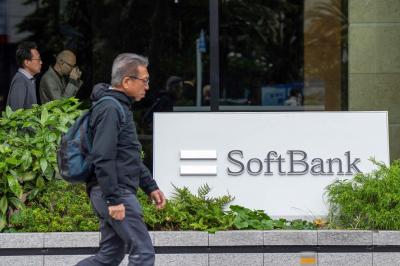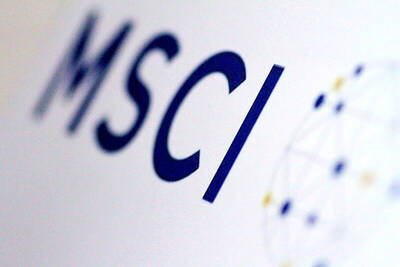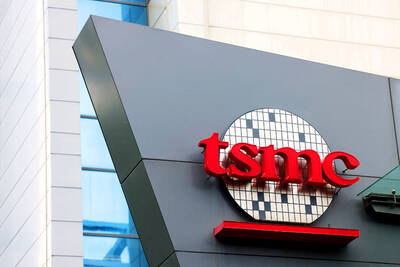DRAM chipmaker Nanya Technology Corp (南亞科技) yesterday posted record-high net profit for last quarter, attributable to prolonged price hikes and a massive gain on disposal of Micron Technology Inc shares.
In the quarter that ended on Dec. 31 last year, net profit skyrocketed 157 percent to NT$21.98 billion (US$743.7 million), compared with NT$8.55 billion in the third quarter of 2017.
The company last quarter booked a NT$16.12 billion nonoperating gain from selling its shares of Micron.
The record-high quarterly figure helped lift the memory chipmaker’s bottom line last year to the highest in its history. For last year as a whole, net profit jumped about 70 percent to NT$40.29 billion, compared with NT$23.72 billion in 2016.
The growth momentum is expected to carry into the first half of this year, as supply scarcity continues due to rational capacity expansion among the world’s major chip suppliers, Nanya Technology said.
“We expect growth in supply and demand to be stable in the first half... Besides, no signs on the horizon indicate a pessimistic [outlook] for the third quarter, which is usually a high season,” company president Lee Pei-ing (李培瑛) told a media briefing.
Lee said he expects DRAM chip prices to rise mildly this quarter, extending a quarters-long upward trend.
That might help further boost the company’s gross margin from last quarter’s 49.8 percent, he added.
There will likely be uncertainty in the second half, depending on how much new capacity Samsung Electronics Co Ltd and SK Hynix Inc add during the period, Lee said.
Based on their newly announced expansion plans, the market should remain stable this year and even next year, supported by annual growth in demand of between 20 percent and 25 percent, Lee said.
Servers will be the biggest driver for DRAM consumption this year, thanks to emerging artificial intelligence applications and more cloud-enabled services, coupled with server replacement demand by telecoms, he said.
To address rapidly growing demand for DRAM used in servers, Nanya is stepping up its efforts to strengthen its market presence and enrich its product portfolios, he added.
“Our aim is to have more balanced product lineups to better cope with market volatility... We hope to start supplying our new 8 gigabyte DDR4 for servers to select clients in the second quarter of this year,” Lee said. “We will not give up the standard DRAM [business] entirely, as it serves as a buffer against market changes.”
Nanya Technology generated revenue primarily from DRAM chips used in consumer electronics, including TVs, set-top boxes and game consoles, which accounted for 60 percent to 70 percent of overall revenue.
Low-power DRAM primarily used in mobile phones was next, contributing about 20 percent, and PC DRAM constituted the remaining 10 percent.
The chipmaker plans to spend NT$11.5 billion on new equipment this year, mostly on 20-nanometer and 10-nanometer technologies, down from NT$29.4 billion last year.
Nanya Technology forecast shipments would this year jump 45 percent year-over-year after it completes 20-nanometer technology upgrades.

PERSISTENT RUMORS: Nvidia’s CEO said the firm is not in talks to sell AI chips to China, but he would welcome a change in US policy barring the activity Nvidia Corp CEO Jensen Huang (黃仁勳) said his company is not in discussions to sell its Blackwell artificial intelligence (AI) chips to Chinese firms, waving off speculation it is trying to engineer a return to the world’s largest semiconductor market. Huang, who arrived in Taiwan yesterday ahead of meetings with longtime partner Taiwan Semiconductor Manufacturing Co (TSMC, 台積電), took the opportunity to clarify recent comments about the US-China AI race. The Nvidia head caused a stir in an interview this week with the Financial Times, in which he was quoted as saying “China will win” the AI race. Huang yesterday said

Japanese technology giant Softbank Group Corp said Tuesday it has sold its stake in Nvidia Corp, raising US$5.8 billion to pour into other investments. It also reported its profit nearly tripled in the first half of this fiscal year from a year earlier. Tokyo-based Softbank said it sold the stake in Silicon Vally-based Nvidia last month, a move that reflects its shift in focus to OpenAI, owner of the artificial intelligence (AI) chatbot ChatGPT. Softbank reported its profit in the April-to-September period soared to about 2.5 trillion yen (about US$13 billion). Its sales for the six month period rose 7.7 percent year-on-year

MORE WEIGHT: The national weighting was raised in one index while holding steady in two others, while several companies rose or fell in prominence MSCI Inc, a global index provider, has raised Taiwan’s weighting in one of its major indices and left the country’s weighting unchanged in two other indices after a regular index review. In a statement released on Thursday, MSCI said it has upgraded Taiwan’s weighting in the MSCI All-Country World Index by 0.02 percentage points to 2.25 percent, while maintaining the weighting in the MSCI Emerging Markets Index, the most closely watched by foreign institutional investors, at 20.46 percent. Additionally, the index provider has left Taiwan’s weighting in the MSCI All-Country Asia ex-Japan Index unchanged at 23.15 percent. The latest index adjustments are to

CRESTING WAVE: Companies are still buying in, but the shivers in the market could be the first signs that the AI wave has peaked and the collapse is upon the world Taiwan Semiconductor Manufacturing Co (TSMC, 台積電) yesterday reported a new monthly record of NT$367.47 billion (US$11.85 billion) in consolidated sales for last month thanks to global demand for artificial intelligence (AI) applications. Last month’s figure represented 16.9 percent annual growth, the slowest pace since February last year. On a monthly basis, sales rose 11 percent. Cumulative sales in the first 10 months of the year grew 33.8 percent year-on-year to NT$3.13 trillion, a record for the same period in the company’s history. However, the slowing growth in monthly sales last month highlights uncertainty over the sustainability of the AI boom even as